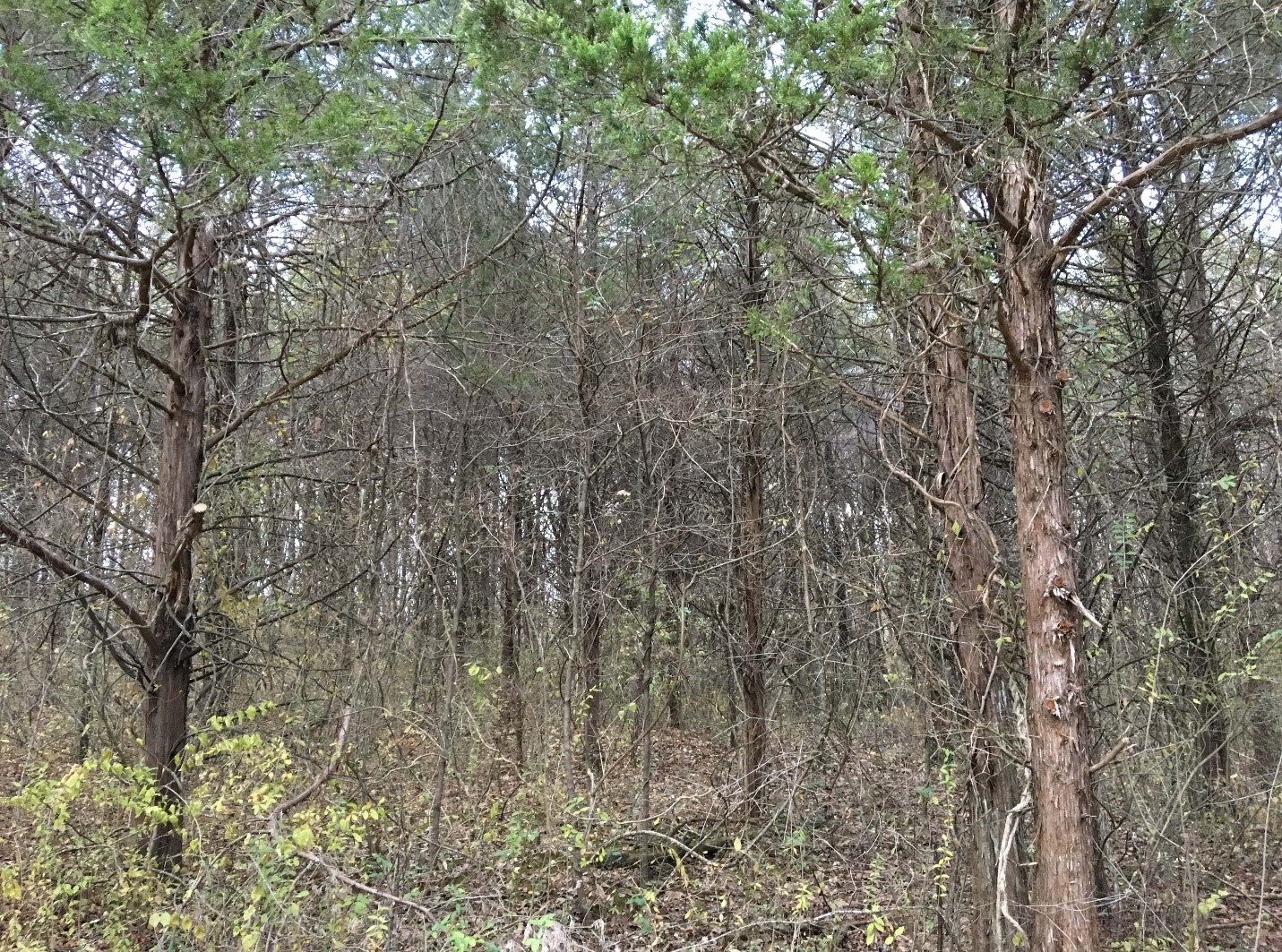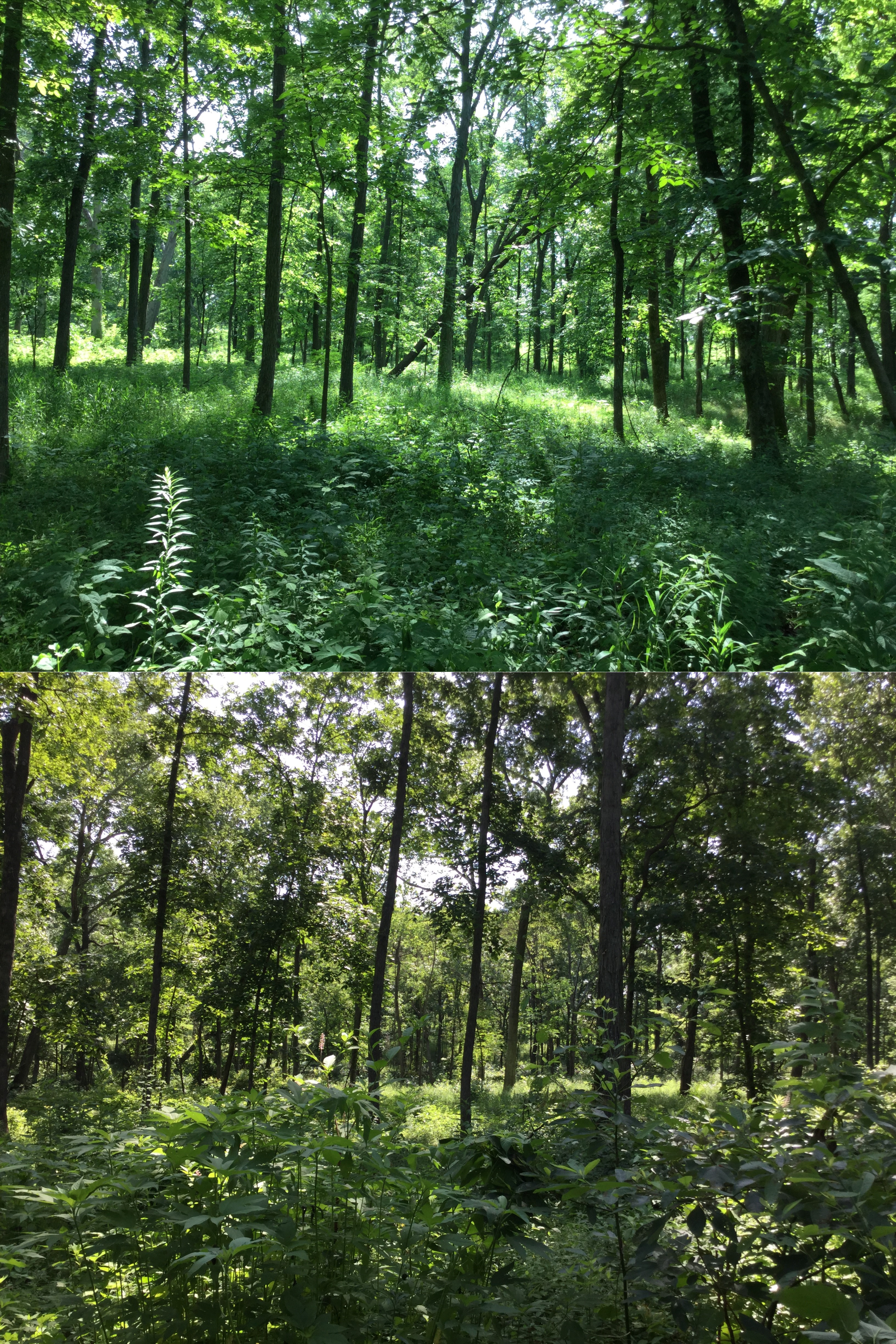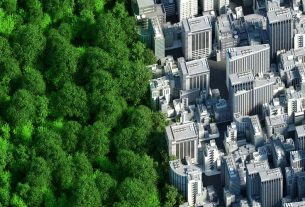Originally posted and adapted from Natural History of Ecological Restoration blog.
Andrew Kaul and colleagues present their latest research exploring whether seed additions can improve restoration outcomes in oak woodlands.
Throughout most of the eastern United States, oak woodlands were once a widespread and dominant ecosystem. These woodlands experienced periodic fires, which prevented woody trees and shrubs from growing so densely that the overstory canopy became closed. The partly open canopy allowed light to reach the ground, supporting a diverse community of herbaceous plants including wildflowers, grasses and sedges.
However, over the past two centuries, human induced changes including fire suppression, invasion by non-native shrubs and other factors have caused most woodlands to become overgrown, and lose much of the diversity of plant species in the herbaceous ground layer.
Restoring the woodland
Ecosystem restoration often involves re-introducing plant species as a seed mix distributed over a cleared area, and this method can be very effective for grassland and savanna habitats, that contain few trees by drastically improving the diversity and quality of the herbaceous community. This approach has been less studied in habitats with greater tree canopies, and little is known about how to select the right species for re-introduction this way.
We, as a group of scientists and land managers, decided to address these knowledge gaps at the Missouri Botanical Garden by starting an experiment at the Shaw Nature Reserve in 2016 where highly diverse seed mixes of native plants were added to a degraded woodland undergoing active restoration.
Throughout late 2016 and much of 2017, crews of managers and volunteer land stewards worked to thin the canopy by removing less desirable tree species, especially the aggressively fast growing native conifer, Eastern Redcedar (Juniperus virginiana). After thinning the canopy, crews used a combination of mechanical removal and herbicides to control the dense non-native shrubs. Fire was reintroduced through controlled burns starting in late 2017.

In January 2018 after the woodland was thinned, we added seed mixes to three different management units along a gradient of lower/wetter to higher/drier parts of this landscape. The seed mixes contained 79-93 species collected from plants growing at the nature reserve.

Our findings
In both the seeded and non-seeded woodlands, the effect of management actions was very clear and positive, since both the number and cover of herbaceous species dramatically increased. This is consistent with previous research showing that thinning the canopy, removing shrubs and reintroducing fire promote restoration of herbaceous plants. We also found substantial benefits from reintroducing species with seed mixes; the areas that received seed had about 10 more plant species present within a 1m2 area.
We were also interested in the quality of the kinds of species that were establishing based on coefficients of conservatism, which denote how sensitive species are to human disturbances.
We found that areas with seed added contained fewer plants that were weedy ruderals and more that were conservative and generally found only in high-quality intact habitat. Interestingly, areas with seed additions were also more dominated by grasses and the areas that did not receive seed tended to have more abundant wildflowers (forbs).

Our final goal was to examine the recruitment success of the 100+ different plant species that we added as seeds to see if there were patterns in which kinds of species tended to establish best.
Perhaps surprisingly, over half of the added species were never detected in vegetation samples. These species might not have been sown into favorable conditions, or potentially, the quality of the seed might have been poor since it came from wild populations and the seeds might not have been viable or mature. Still, some seeds may be dormant for many years and more added species may break dormancy and recruit later.
Among the species that did establish, we found that recruitment was much higher for those that were sown at higher rates. For example, grasses and forbs tended to recruit well when sown at high rates but the 25 sedge species we added had little or no recruitment success.
Future development
Based on our results, future research on woodland restoration should address why sedges are difficult to restore, and what methods can be used to remedy this deficit. Additionally, it will be interesting to track the development of these herbaceous communities into the future and examine how sown and unsown areas resist re-invasion by shrubs while they are continually managed with periodic burns.
Our seed mixes dramatically improved the diversity and floristic quality of the herb layer in this woodland, however many species did not recruit, and key functional groups including sedges and forbs were underrepresented in their abundance.
Future research should investigate what ratios of functional groups in seed mixes produce the best restoration outcomes, since conventions established for grassland restoration may not be the best approaches for restoring herbaceous species under a tree canopy.
Read the full research: “High-diversity seed additions promote herb-layer recovery during restoration of degraded oak woodland” in Issue 4:1 of Ecological Solutions and Evidence.
